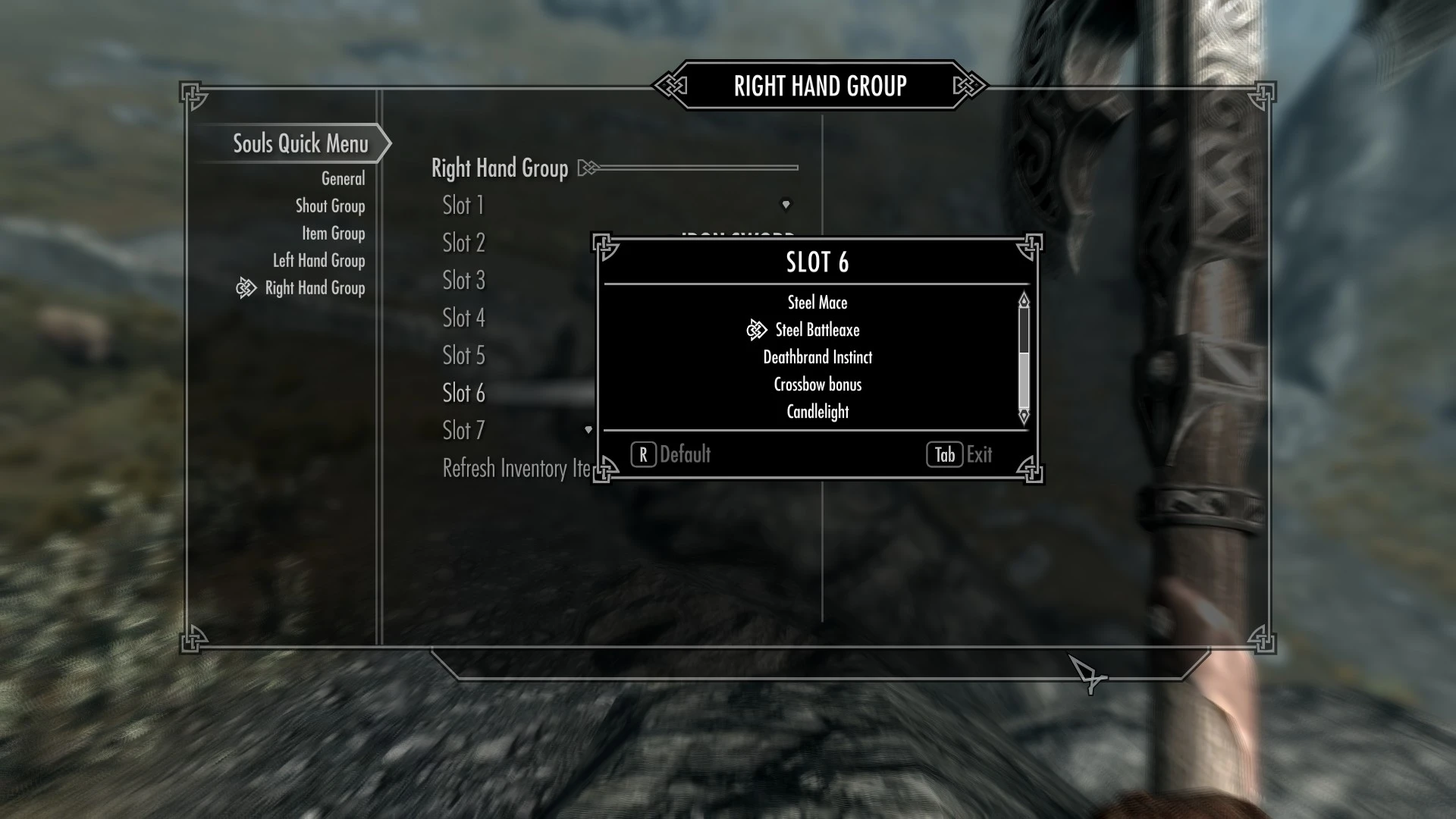
- #Skyrim dark souls quick menu install#
- #Skyrim dark souls quick menu mod#
- #Skyrim dark souls quick menu manual#
- #Skyrim dark souls quick menu archive#
Clicking on the button allows switching instances. Instances allow everything to be partitioned and independent, which mimics the 'portable' installation methodology without the multiple (and redundant) MO installations.
#Skyrim dark souls quick menu mod#
This essentially combines mods from each build into a single mod list, adding a lot of 'noise' in the form of mods that will never be enabled. This is a significant limitation when one attempts to manage two completely different mod builds for the same game. While normal MO Profiles allow independent management of game configuration (INI) files, enabled mods, enabled plugins, mod prioritization, etc., they each pertain to the same game and each share the same mod list.


Think of instances as an extension to MO's profile system in that the instance acts as a completely independent 'profile' that applies to a specific game (and/or a specific mod list for the same game). Data for each instance is stored under %LocalAppData%/ModOrganizer. With instanced installation, a single MO installation is is used to manage mods pertaining to multiple games and/or mod builds within the same game. There are no known issues with the portable, and the only drawback is redundancy of the MO application itself (which does present a maintenance problem at some point, like when MO needs to be updated or particular themes set, as examples). Some prefer this method over instances, since this is how MO has historically worked.
#Skyrim dark souls quick menu install#
Mod Organizer (MO) can be used in two different modes: portable or instanced.Ĭonfiguring MO in portable mode, the user must install a distinctly separate copy of MO for each individual game they want to manage. If so, add an exclusion for the file and try again.
#Skyrim dark souls quick menu archive#
#Skyrim dark souls quick menu manual#

Profiles (ability to switch between different mod configurations seamlessly).Mod isolation (game directory is kept clean).Since then, several members of the modding community have stepped in to continue development (the birth of "Mod Organizer 2", which Step refers to as simply "Mod Organizer" or "MO"). Mod Organizer was initially developed by Tannin before he retired as the lead MO creator/developer to became the lead developer of "Vortex" (by Nexus Mods). This makes enabling and disabling mods very simple and clean and without potential for breaking other mods or the game itself. It relies on a virtual file system (VFS) to deploy mods during runtime, which preserves the integrity of all assets in the game's 'real' file-system. Mod Organizer (MO) is an open-source program designed to simplify the installation and management of mods and modding tools for beginners and experts alike. Step does not distinguish between the two. This guide pertains to Mod Organizer in its most contemporary state, which today is officially "Mod Organizer 2". 11 Installing, Updating, & Uninstalling Mods.8.4.11 圎dit (TES5Edit, TES4Edit, FNVEdit & FO3Edit).8.4.5 Fore's New Idles for Skyrim (FNIS).8.4.2 Better Oblivion Sorting Software (BOSS).8.3 General Application Troubleshooting.

8.1 Automatically Recognized Executables.2.2.1 Enable text descriptions of the toolbar icons.


 0 kommentar(er)
0 kommentar(er)
